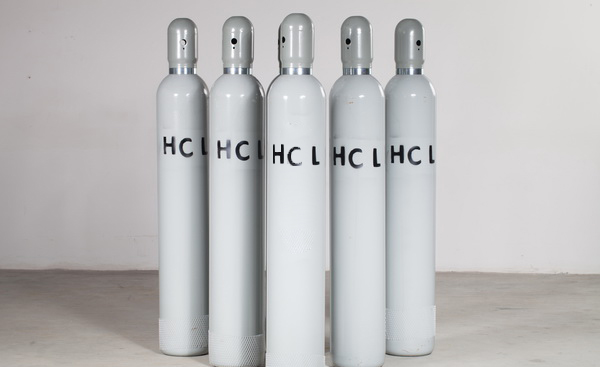Hydrogen Chloride
Release Date: 2022-06-16 10:30:46 Visit: 239

Colorless, toxic, corrosive non-flammable gas, suffocating odor, strong irritation to the upper respiratory tract, corrosive to eyes, skin and mucous membranes. Its specific gravity is greater than that of air, and it produces white smoke when it encounters humid air, which is easily soluble in water. Liquefy bottled gas to its vapor pressure (41.7 kgf/cm2 @21.1°C ). High-purity hydrogen chloride is mainly used in the production of large-scale integrated circuits, gas phase polishing of single crystal silicon wafers, and corrosion of epitaxial bases.
Precautions
Hydrogen chloride emits white smoke when it encounters moist air. The concentration of smoke is related to the humidity of the air. The reaction with water generates a lot of heat and forms highly corrosive hydrochloric acid. A pungent sour taste can be detected at very low levels (<5ppm). Direct contact with skin can cause severe burns. In the event of a leak, the personnel in the contaminated area should be quickly evacuated to the upper wind, and the isolation should be carried out immediately. The isolation should be 150m for small leaks and 300m for large leaks, and access should be strictly restricted. It is recommended that emergency personnel wear self-contained positive pressure breathing apparatus and chemical protective clothing. Enter the scene from upwind. Cut off sources of leaks as much as possible. Reasonable ventilation, accelerate the diffusion. Spray ammonia or other dilute lye to neutralize. Build dikes or dig pits to contain large amounts of wastewater. If possible, use the exhaust fan to send the residual gas or leakage gas to the washing tower or the fume hood connected to the tower. The leaking container should be properly handled, repaired and inspected before use.





